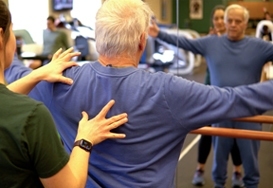Please note:
The services provided by the PT, OT, or ATC shall in no way be considered a substitute for the services of a physician and will function only under the outlines set forth by the Illinois Department of Professional Regulations.
A parent/guardian must be present to sign a Consent to Treat form for all minors. Parents are asked to call at least an hour ahead of time to ensure the availability of our staff. If over 18, the athlete must show a form of ID for proof of age. Per federal guidelines, beneficiaries of Medicare, Medicaid, Tricare, VHA, and other federally funded programs are not eligible for complimentary injury screens.
Take IBJI With You

Scheduling a complimentary injury screening is quick and easy with the IBJI Sports Access app.
Request your injury screening with a licensed physical therapist or certified athletic trainer at one of IBJI’s seven OrthoAccess locations, or request a concussion evaluation with the IBJI Sports Neurology team.
Download the app for free in the App Store or Google Play.
FAQs About Injury Screening
Is an Injury Screening the Same as a Diagnosis?
There are some differences between an injury screening and a diagnosis. Sometimes a screening will uncover a problem that needs further testing and diagnosis by a doctor. When it comes to injuries, physical therapists can identify an issue and provide preventative guidance before a more serious problem occurs.
Why Is Injury Screening Important in Physical Therapy?
Anyone who has experienced a minor injury or is at risk for one can benefit from an injury screening. Children and adult athletes can reduce their risk of a season-ending injury by consulting with a physical therapist.
For example, if a cross-country runner has a problem with their gait that could potentially cause a knee injury, it could be identified during an injury evaluation. A physical therapist or certified athletic trainer could help them correct the problem.
Which Sports Have the Highest Injury Rate?
According to research by Johns Hopkins, the highest rates of injury occur in sports that involve contact and collisions, like football, hockey, and soccer. Sixty-two percent of organized sports-related injuries occur during practice.
Interestingly, more severe injuries occur during individual sports and recreational activities, like running or playing on a playground.





